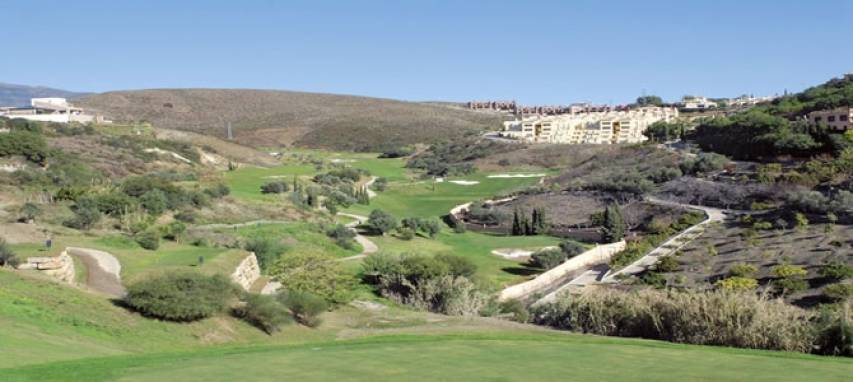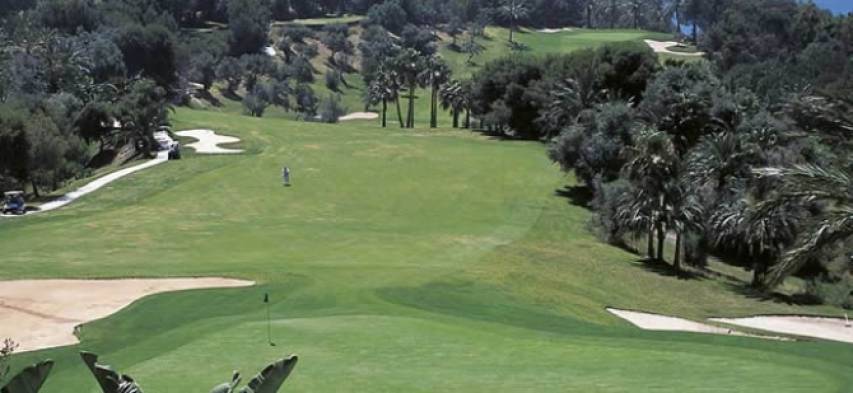His radiant and perennial smile is Miguel Presyler’s signature image – a 65-year-old, scratch-handicap phenomenon who has won everything in amateur golf. The life of this dual-nationality Philippine and Spaniard with a famous surname (he is first cousin of Isabel) and notable spiritual and physical youthfulness has always revolved around a sport which has given him 800 trophies, an infinity of satisfactions and a couple of frustrations – those he suffered when wasting his opportunities to turn professional.
Happily married with a wife who has supported him completely and understands his “golfing vice” (she also plays, obviously), he loves Spain and specifically Sotogrande, where he arrived nearly 40 years ago.
The circumstances of his arrival at the macro-urbanisation are quite interesting. In 1970, Miguel was competing at the Puerta de Hierro club in Madrid in the World Amateur Golf Championships (Eisenhower Trophy), representing the Philippines national team, and it was suggested to him that he visit Sotogrande, because there was a magnificent golf course there. It wasn’t the first time he had visited Spain, as his parents had family in the country, and his brother had been born in Madrid.
Destiny can be a strange bedfellow: three years later, he began working for a company which, four years later, in 1977, sent him to Sotogrande.
Sotogrande founder Joseph McMicking was also at the time the main shareholder of Ayala Corporation Philippines. With the objective of maintaining the Sotogrande project’s continuity, McMicking decided to sell Sotogrande to Ayala.
In September 1977, Miguel arrived in Spain on his saint’s day. From 1978 to 1983, when the shares of the Financiera Sotogrande S.A. company were sold, he was general manager of Sotogrande. In 1983, when Ayala was sold and severed its links with Sotogrande, he didn’t want to return to the Philippines because of political problems existing during the Fernando Marcos presidency. He travelled to the United States, where he remained for two years. In 1986, just after the border with Gibraltar was re-opened, he realised Sotogrande would experience enormous development and decided to return to Spain. “I also didn’t like the States”.
His professional career took a new path, together with a colleague who had been director of Sotogrande’s hotels during his time as general manager. This person had started a real estate company and offered Miguel the chance of joining the business. Later, he gained Spanish nationality, as his mother was Spanish (his paternal grandparents had been born in Spain).
His relationship with one of his great loves, golf (the other is his wife – they have been married for 40 years), began at 10 in a strange way. Miguel played various sports until one day, after watching a programme about golf on the TV, he decided to take a baseball bat and ball and try to hit the latter into a hole he had dug in the garden with a shovel. These were the first shots he hit with some resemblance to golf.
He liked it so much his father soon bought him some clubs, this time proper ones. His father, who had given up golf about 10 years earlier, started giving him 15 to 20-minute lessons after work, swinging the club without a ball, teaching him how to hold the club, the correct posture and swing. He bought him plastic balls to hit in the garden and Miguel designed his own hole, using a tree to mark out the dog-leg of a par-4. For the hole he took an empty tin of preserved pineapple, cut the lid and buried it in the garden. He cut the grass around this tin (or hole) every day and in the area where the plastic ball reached the green he changed it for a hard golf ball and putted out.
Nevertheless, his favourite sport at the time was sailing, and in 1966 he won a Finn Olympic-class competition (one-person yacht) which included southern Asia, Australia and New Zealand. He was chosen to represent the Philippines in the Olympics in Mexico and trained for seven months. However, when the moment of truth arrived, he didn’t have the funds to take his boat to Mexico. “I was really annoyed,” he recalls, “gave up sailing and took up golf.”
His true baptism into golf, on a proper course, was in Manila one year following his creative garden tinkering and after six months of hitting countless balls on the practice ground. His first handicap, aged just 11, was 12. Two years later he had reduced that to three, “but I got stuck because I didn’t play enough”. At 17, when he was planning to compete in the Olympics as a sailor, he finished 12th in the Philippines National Golf Championship. The top 12 qualifiers headed into an elimination round for the national team, and Miguel – to secure a position – had to win in a play-off against five rivals. He spent six years in the national team.
At 23, he began work and had to give up golf because, when he left the office, it was almost evening and, not being able to maintain the same level of play, he decided to abandon the game and return to sailing.
When he arrived in Sotogrande four years later, in 1977, his handicap had risen to eight (“I couldn’t even hit the ball,” he recalls, slightly exaggerating memories of those times).
Miguel had the good fortune of receiving help from Bob Toski, one of the leading US teaching professionals and a former number one on the US Tour, who took groups of golfers to Sotogrande every September. So, from a handicap of eight he eventually dropped to plus-3.2, and from then on competed in everything he could.
His long trail of victories is apparent in the 800 trophies he keeps in a room (which must be extremely large!) at home. He won the Philippines National Junior Championship two years in a row; also the main national championship; five times the South Asia Championship with the Philippines national team; second as an individual in the Copa Hispanidad (for all Spanish-speaking counties); in Spain, five national mid-amateur titles (he wasn’t able to compete in the main national championship until securing his Spanish passport in 1995); runner-up in the over-35s European championship... He began playing a lot more when he joined the senior ranks, at 55.
And more victories came: four individual Spanish championships and one pairs, all under the auspices of the Royal Spanish Golf Federation, and four Seniors Association national titles. He won gold and bronze medals at the individual European seniors championship in 2006 and 2007, still the only Spaniard to have achieved this, and he was third in the 2007 British Senior Amateur, the best result to date by a Spanish senior.
Turning professional is something that has gone through his mind more than once, but the circumstances of his life at these times discouraged him from following through. He doesn’t regret that. When he was a member of the Philippines national team, he was encouraged on two occasions to turn professional in the US, receiving offers to pay his costs to start the “American adventure”. Miguel decided, however, that he wanted to complete his economics and business studies, and after doing that he entered the workplace and got married. Professional golf was definitively discounted as an option.
Many years later, when he was 48, Miguel wanted to remove this thorn from his youth and considered turning professional as a senior. He spent one year preparing conscientiously, working hard with a physical trainer who was involved with the Spanish national team. But his life and work circumstances once again stood in his path. The real estate market had begun its meteoric rise and, trying to combine golf and work, Miguel suffered so much stress his heart began to have palpitations. His cardiologist warned him he couldn’t carry on at that pace, and he opted for stability and good business prospects rather than the adventure of a career in professional golf.
What also helped him decide was that his wife – who is a tremendously home-loving person – would have to make the great sacrifice of accompanying him on his travels from hotel to hotel.
He admits that it was difficult to change his plans after one year of hard training and preparation, but adds that he doesn’t regret the decision for one moment, because the last few years have been great for business.
He began competing extremely strongly in the senior category, until 2008, but had to have an operation on his knee and his form – and, just as importantly, his optimism – began to deteriorate. His plus-1.9 handicap increased to 3.8, and he became exasperated.
Fortunately, a couple of years ago he decided to take classes with Juan Antonio Marín, a club team colleague he had known from when he was still a child. He gave him his first set of clubs and he later became an excellent amateur and eventually the professional at Royal Sotogrande Golf Club.
“I was very unmotivated. First of all I lost my long game, then I suffered from the yips with my approach shots and putting, but after two years working with Juan Antonio my game is improving, and my confidence is coming back. There’s still a lot that needs improving but I’m on the right path.”
The best sign that things are returning to normal is that he has once again won the national seniors title, eight years after his last victory in the tournament, and this year he has also won the European seniors championship for over-65s.
Miguel is a much-loved person in Sotogrande, especially at the Royal Sotogrande club where he has been on the board of directors for 21 years, nearly half of that time as vice president. He admits that he has been asked several times to stand for president of the prestigious club, “but I resist because, if not, I wouldn’t be able to play and compete as I have up to now.”







